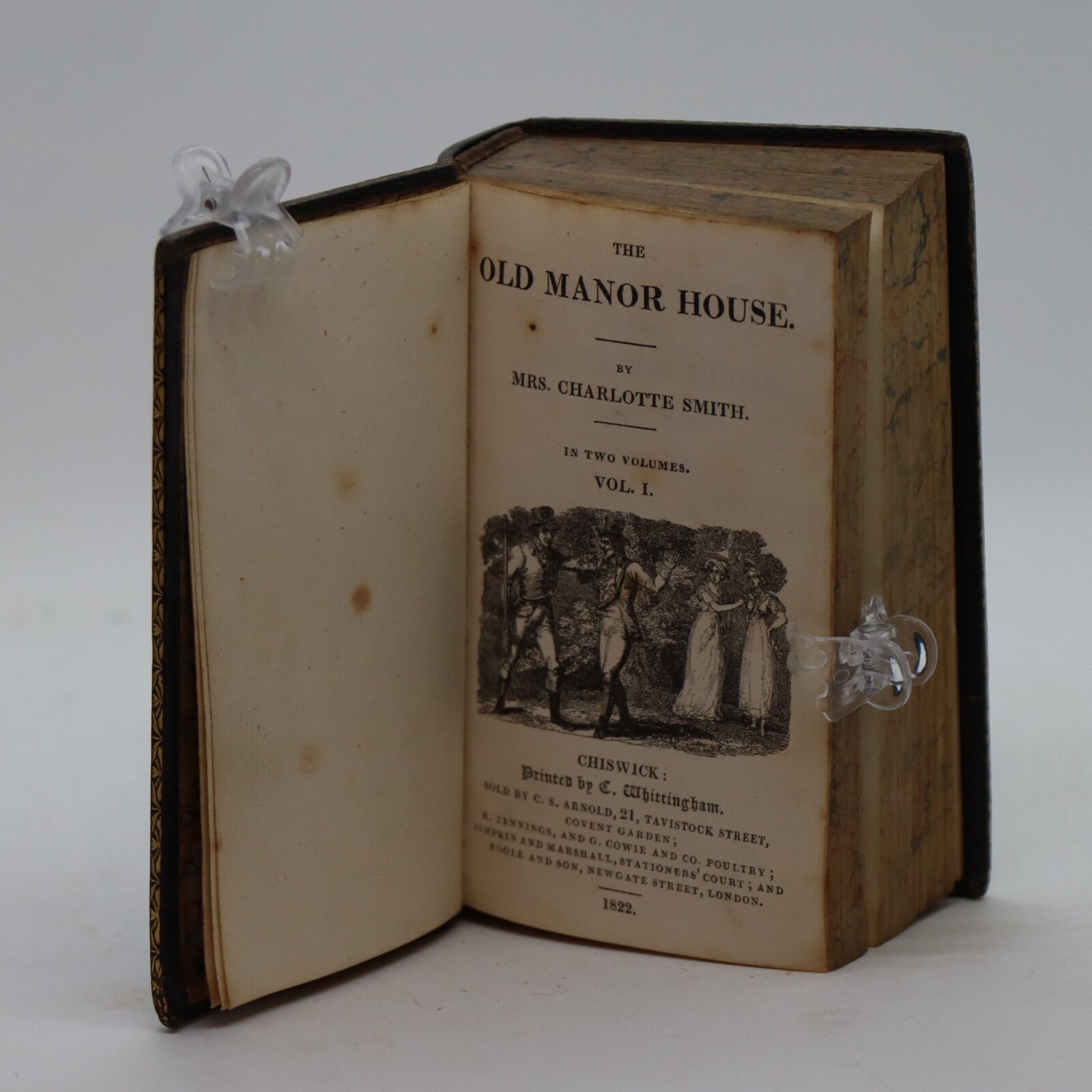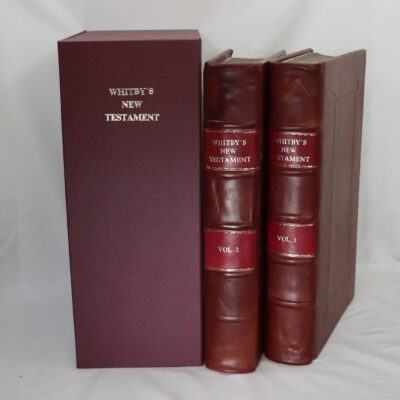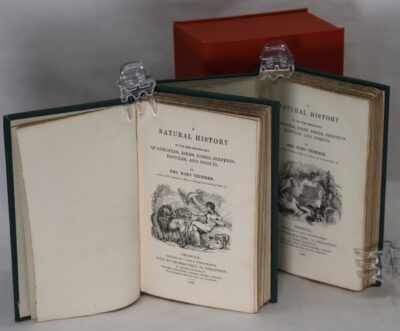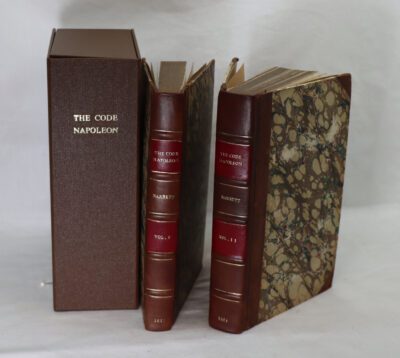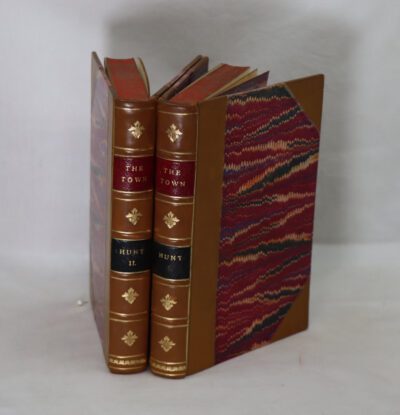The Old Manor House. Volumes I & II (as one).
By Mrs Charlotte Smith
Printed: 1822
Publisher: C S Arnold. London
| Dimensions | 8 × 13 × 4 cm |
|---|---|
| Language |
Language: English
Size (cminches): 8 x 13 x 4
Condition: Fine (See explanation of ratings)
Item information
Description
Full leather navy binding. Gilt edge lining on both boards. Red and green title plates with gilt lettering, banding and decoration on the spine.
It is the intent of F.B.A. to provide an in-depth photographic presentation of this book offered so to almost stimulate your feel and touch on the book. If requested, more traditional book descriptions are immediately available.
A very finely bound rendition of the two volumes into one book
A very good edition of this scarce novel, first published in 1793, and considered by many to be her best work. Charlotte Turner Smith (1749-1806) was primarily a poet, but also wrote novels, particularly to raise income.
The Old Manor House is a novel by Charlotte Smith, first published in 1793. The plot tells the love story of a gentleman, Orlando Somerive, and his aunt’s servant, Monimia Morysine. The novel blends gothic, sentimental, and political narrative techniques to present a “polemical romance,” depicting the American revolution of the 1770s to comment on the ongoing French revolution of the 1790s. Smith particularly critiqued the injustices of war and property laws. The Old Manor House is sometimes considered the best of Charlotte Smith’s ten novels, drawing particular praise for its deep characterization, engaging plot, and descriptions of nature.
Smith composed the novel between August 1792 and January 1793, a period when the French Revolution was growing more violent. Smith was sympathetic to the political goals of the French revolutionaries. Her previous novel, Desmond (1792), was explicitly political in its depiction of contemporary events, and received strong criticism for its pro-French ideas. As anti-French sentiment grew even stronger in England, Smith grew less direct about her political ideas; The Old Manor House expresses similar ideals as Smith’s earlier work, but filtered through her country’s recent history rather than current events.
Charlotte Smith (née Turner; 4 May 1749 – 28 October 1806), an English novelist and poet of the Romantic period, prompted a revival of the English sonnet, helped to set conventions for Gothic fiction and wrote political novels of sensibility. Despite ten novels, four children’s books and other works, she saw herself mainly as a poet, expecting to be remembered for her Elegiac Sonnets. She is credited with turning the sonnet into an expression of woeful sentiment. She left her husband and began writing to support their children. Her struggles for legal independence as a woman gave themes to her poetry, novels, and autobiographic prefaces. Her early novels show development in the Gothic and sentimentality. Later ones such as the controversial Desmond and The Old Manor House praised the ideals of the French Revolution. Waning interest left her destitute by 1803. Barely able to hold a pen, she sold her book collection to pay debts and died in 1806. Largely forgotten by the mid-19th century, she has since been seen as a major Romantic writer.
Want to know more about this item?
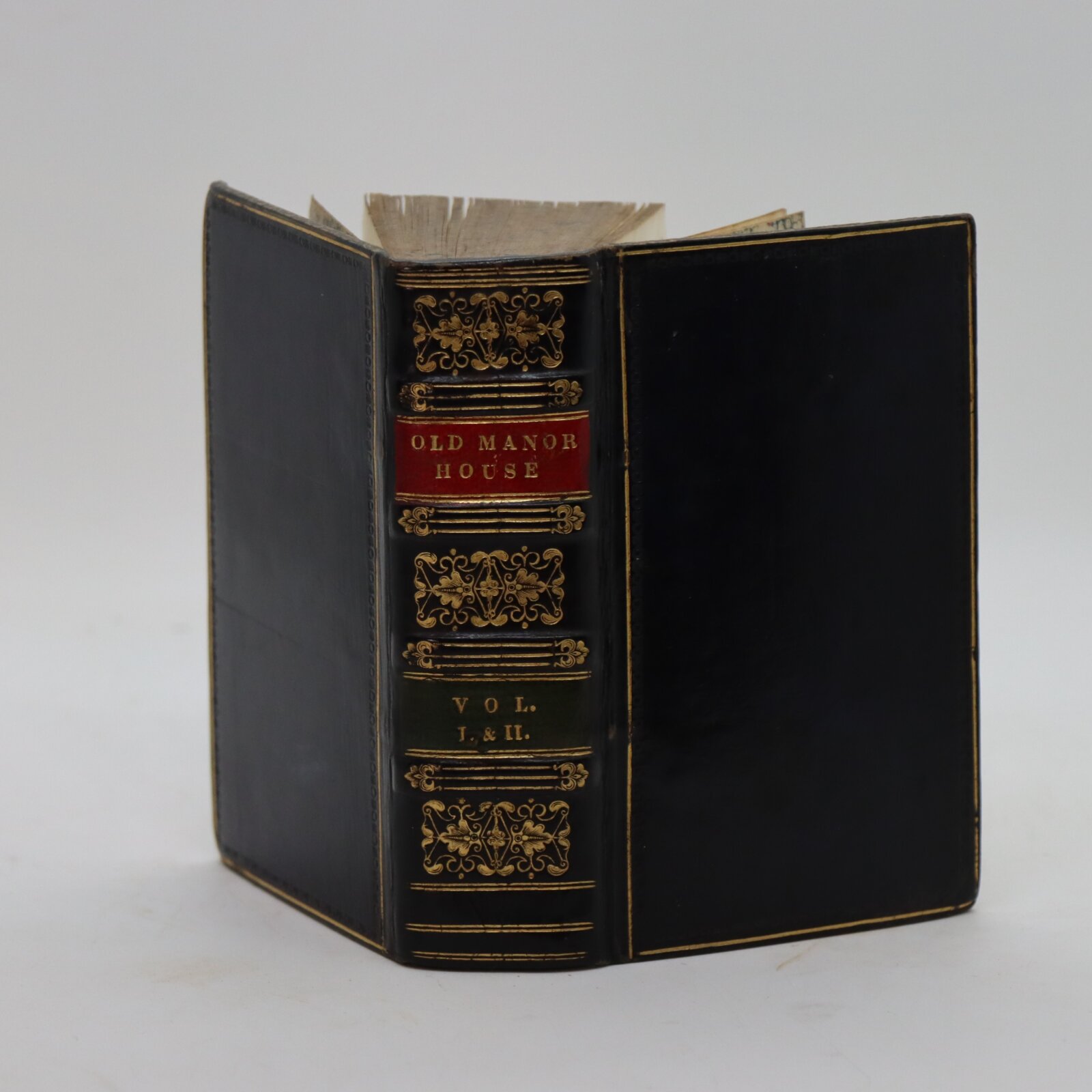
Related products
Share this Page with a friend

